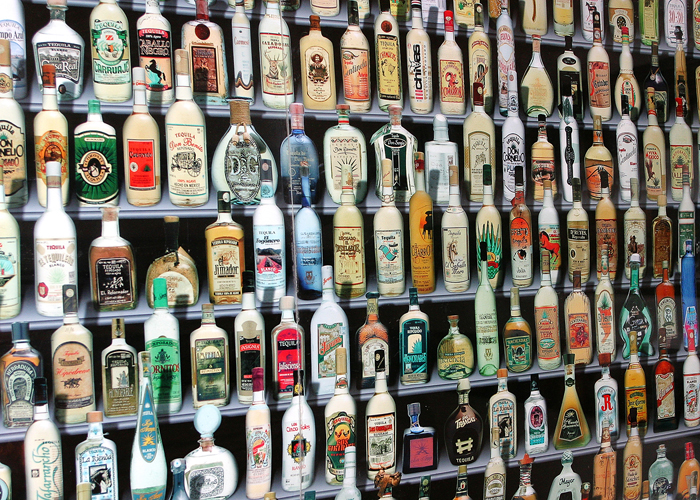The Main Principles Of Tequila Reviews
Wiki Article
The Greatest Guide To Tequila Reviews
Table of ContentsTop Guidelines Of Tequila ReviewsExcitement About Tequila ReviewsThe Buzz on Tequila ReviewsIndicators on Tequila Reviews You Need To KnowAll about Tequila ReviewsThe Main Principles Of Tequila Reviews
Jalapeno + tequila = one spicy alcoholic drink. Maintaining watermelon in the fridge freezer at all times may be called for after tasting this watermelon slushie.The tequila process starts in the agave areas when the plants are picked to be reduced and also required to the factories for makeover. Later in the manufacturing facility, the processes of Grinding, cooking, fermentation, distillation, growth, purification, dilution, and product packaging adhere to. Discover the tequila production process from the growing of the agave to the product packaging step by action.
Little agave utilized in Baja The golden state for the local beverage. The only agave allowed for usage in tequila, and also only when expanded in specified regions according to the normas - tequila reviews.
All about Tequila Reviews
Spirit or alcohol, generally made from walking cane sugars. The wonderful sap extracted from the pia (heart) of the agave plant. It is fermented for a number of days and also after that distilled to make tequila and mezcal, or fermented alone to make pulque. Aguamiel is sold as a regional drink in the states of Zacatecas, San Luis Potosi, Hidalgo (where sellers normally include chile).
Mezcal might just be distilled when. After distillation, the alcohol is filtered. Direccion General de Normas (tequila reviews). Prior to 1978, the term DGN was made use of to recognize tequila made under the government regulations, however this term isn't used any type of extra, other than on some mixto tequilas bottled in the U.S.A.. The NOM number now showed a manufacturer's compliance with Mexican guidelines.
See This Report about Tequila Reviews
It is sometimes put in bottles of mezcal, however never ever in tequila. tequila reviews. Ought to be on all labels of 100% tequila. Young agave plant that grows from the base of the plant.The hijeulos have to do with the size of an orange or large onion currently. They are likewise called seeds or mecuates. A traditional stove utilized to bake the agave pias. Palenques are also sometimes referred to as hornos. Fiber extracted from the agave entrusts to generate fabrics, cables and paper.
/__opt__aboutcom__coeus__resources__content_migration__simply_recipes__uploads__2018__08__Guide-to-Tequilas-6-badce2572b4a43298c33cf67309c1937.jpg)
Some Known Factual Statements About Tequila Reviews
Agave plant prepared for desquiote. Maguey farmers or harvesters in basic are called maguyeros or as agaveros. Long or huge hand: large agave, usually expanded in the highlands. Their leaves stand more set up and the shade is greener."Son of the Maguey." This principal of the Tecuexes people in the highlands of Jalisco led his people into an alliance with the Spanish colonizers.The word is additionally connected to the 5 fingers of the hand, due to its resemblance in between the form of a human hand and also the maguey plant. An internationally prominent mixed drink made with tequila, lime juice, and orange liqueur. Its beginning has never ever been definitively verified, yet it was designed sometime in between 1930 and also 1950, most likely in Mexico.
Traditional, strong drink made with pulque, corn, banana and also raw brownish sugar. It is consumed during celebrations in the state of Queretaro. The terrain that stays between rows of agave plants, used to grow corn and also beans when the agaves are still little. A manufacturer of mezcal. One more prehispanic name for maguey.
9 Simple Techniques For Tequila Reviews
Mixed: tequilas made with only 51% agave sugars (minimum). If the label doesn't claim "100% de agave," or "cien de cientos de agave," after that the product is a mixto tequila.See 100% agave. Grinding equipment to mill the prepared agaves right into pulp. Rock grinding wheel made use of to crush agave made use of in making mezcal. See additionally tahona. Distillery workers accountable of the tahona as well as grinding-mashing process. Must. The juices (aguamiel) and solids of the agave after the grinding stage. This will be fermented to create alcohol.
Every distillery gets a NOM identification number to reveal they comply with the regulations and also standards regulating tequila production. Try to find this mark on the tag to make sure the tequila meets these standards. The number determines each distiller. click for source Distillers may make many completing items under the very same NOM identifier. The NOM number does not guarantee top quality, only that the distiller is properly accredited.
Getting The Tequila Reviews To Work
Named after the pit, or palenque, in which the agave is cooked. The spiky, thick leaves of the agave. A bubble that continues click here now to be on the surface of the tequila after serving it or mixing it, said to signify a great tequila.Brownish sugar cones utilized when making mixto tequilas to speed up fermentation to be able to utilize immature and also less plants. The bulbous centre of the agave including the sugars and starches made use of for the production of tequila.

Report this wiki page